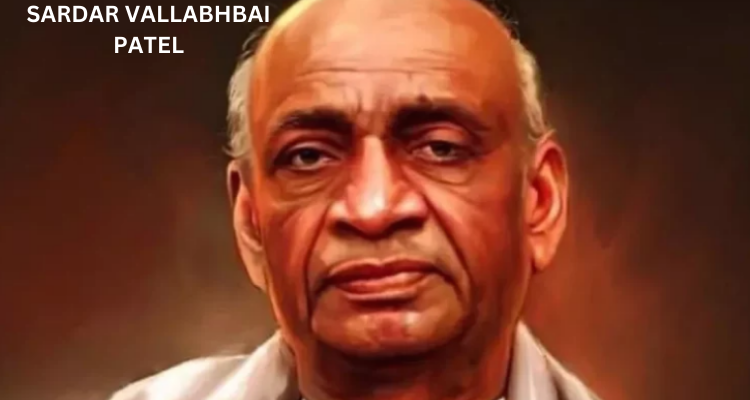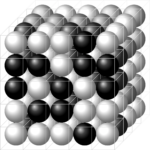
A lawyer, politician, and freedom warrior, Sardar Vallabhbhai Patel is referred to as the Iron Man of India. He had a significant impact on India’s modernization. Because of his unwavering will, strong will, and moral leadership style, Sardar Patel was awarded this accolade.
From October 31, 1875, until December 15, 1950, Vallabhbhai Jhaverbhai Patel was a political leader, lawyer, and advocate for Indian independence. Most people call him Sardar Patel. The word “sardar” “chief” In India, he was the country’s first deputy prime minister. He was a prominent figure in the Indian National Congress and a key figure in the fight for Indian independence. He overcame the formidable obstacle of incorporating princely states into an independent India. He was the Home Minister in 1947 during the Indo-Pakistani War
Biography
Sardar Vallabhbhai Patel was born into the Leva Patel (Patidar) caste in Nadiad, Gujarat. He was Jhaverbhai Patel and Ladaba Devi’s fourth child. His elders were Vitthalbhai, Narsibhai, and Somabhai. He primarily learned by studying on his own. He returned from London after completing law & settled in Ahmedabad in 15th Aug. 1913 (after 3 years). He took involved in the Indian independence movement after being influenced by Mahatma Gandhi’s beliefs.
Freedom Movements
1. Khedha Satyagrah
The Kheda battle in 1918 was Sardar Patel’s first and most significant contribution to the liberation movement. During that time, Gujarat’s Kheda division was experiencing a severe drought. The British government was asked to provide significant tax relief by the farmers. Gandhiji, Sardar Patel, and others rallied the farmers and encouraged them to avoid paying taxes when this was rejected. In the end, the government gave in, and that year’s taxes provided relief. Sardar Patel’s first triumph was this one.
2. Bardoli Satyagraha
Under Vallabhbhai Patel’s leadership, the Bardoli Satyagraha was a significant peasant movement in Gujarat in 1928 during the Indian independence movement. The provincial administration had raised farmers’ rent by thirty percent at that point. Patel was adamantly against the rent hike. Despite taking drastic measures to put an end to this satyagraha protest, the government was eventually compelled to concede to the farmers’ demands. After conducting a thorough investigation, judicial officer Bloomfield and revenue officer Maxwell ruled that the 22 percent rent increase was incorrect and lowered it to 6.03 percent.
The women there bestowed upon Vallabhbhai Patel the title of ‘Sardar’ following the success of this Satyagraha movement. Gandhiji explained how the peasant struggle and the national freedom struggle relate to each other in the context of the Bardoli peasant struggle. He claimed that every effort and struggle brings us one step closer to Swaraj and that these struggles may even be more beneficial than the direct fight for Swaraj in getting us all there.
After Independence
In accordance with Gandhiji’s desires, Sardar Vallabhbhai Patel ji stayed out of the election for prime minister and backed Nehru, despite the fact that the majority of the provincial Congress committees supported him. He was assigned to the positions of Home Minister and Deputy Prime Minister. However, Nehru and Patel’s relationship remained hostile long after this. As a result, both of them frequently threatened to leave their positions.
Integrating the princely states into India was his top aim as Home Minister. And he did it without spilling any blood. Only during Operation Polo in Hyderabad State did he have to dispatch the army. Because of his significant role to India’s integration, he is referred to as the Iron Man of India. In 1950, he passed away. Nehru faced minimal resistance in the Congress after this.
Political Integration of India
India had 562 princely states at the time of its independence. They occupied 40% of India. Just prior to independence (during the transition phase), Sardar Vallabhbhai Patel and Vice President Menon began trying to unite numerous princely republics with India. The princely kingdoms were informed by Patel and Menon that autonomy would not be feasible. Consequently, the proposal to join with India was voluntarily accepted by all but three of the princely kingdoms. Only the rulers of Hyderabad State, Junagadh, and Jammu and Kashmir refused to comply. A little princely state close to Saurashtra, Junagadh was encircled by Indian territory on all sides. It wasn’t close to Pakistan. On August 15, 1947, the Nawab of the state declared its intention to unite with Pakistan. Hindus made up the majority of the state’s population, and they desired to join India. The Indian Army entered Junagadh as a result of widespread protests against the Nawab. The Nawab fled to Pakistan, and Junagadh joined India on November 9, 1947. In February 1948, a referendum was held there, and the results supported joining India. With Indian territory around it on all sides, Hyderabad was India’s largest princely state. With Pakistan’s support, the Nizam there declared his independence and began growing his army. He continued to bring numerous weapons. Patel started to worry. On September 13, 1948, the Indian Army finally made its way into Hyderabad. Three days later, in November 1948, the Nizam gave up and agreed to merge with India. Nehru claimed that this issue was an international one, thus he kept Kashmir with him. He brought the Kashmir issue before the UN, where separatist groups were causing the issue to worsen daily. Thanks to the efforts of Prime Minister Modiji and Home Minister Amit Shahji, Article 370 and Article 35(A) that granted Kashmir special status were repealed on August 5, 2019. Sardar Patel’s vision of a unified India was realized when Kashmir became an essential part of the country. Two union territories, Jammu & Kashmir and Ladakh, were established on October 31, 2019. All Indian laws will now apply in Jammu and Kashmir, which will continue to be a part of the Center. This is a genuine homage to Patel ji from the appreciative nation.
Nehru and Patel
Pt. Nehru, the first Prime Minister of independent India, and Sardar Vallabhbhai Patel, the first Deputy Prime Minister, were very different from one another. Sardar Patel was well ahead of Pt. Nehru in advocacy and had earned the top spot among the students of the entire British Empire, despite the fact that both had studied in England and earned a barrister’s degree. Sardar Patel and Nehru both tended to ponder a lot. Patel was a weapons acolyte, whereas Nehru studied the scriptures. Patel had also gone to college, but he didn’t even have a hint of ego. “I did not fly high in the vast sky of art or science,” he once said. I have grown up in kutcha huts, in the filthy homes of the metropolis, and on the fields of impoverished farmers.” Pt. Nehru found the village’s life and dirt annoying. Pt. Nehru aspired to become a socialist prime minister and sought international renown.
Vallabhbhai Patel’s full name was Vallabh Bhai, Jhaverbhai Patel. He was known with other names like; Sardar Patel and Iron Man.
Sardar Vallabhbhai Patelwas born on 31 October 1875 in Nadiad, Bombay Presidency, British India while he died on 15 December 1950 (age 75) in Mumbai, India. He died of a heart attack.
